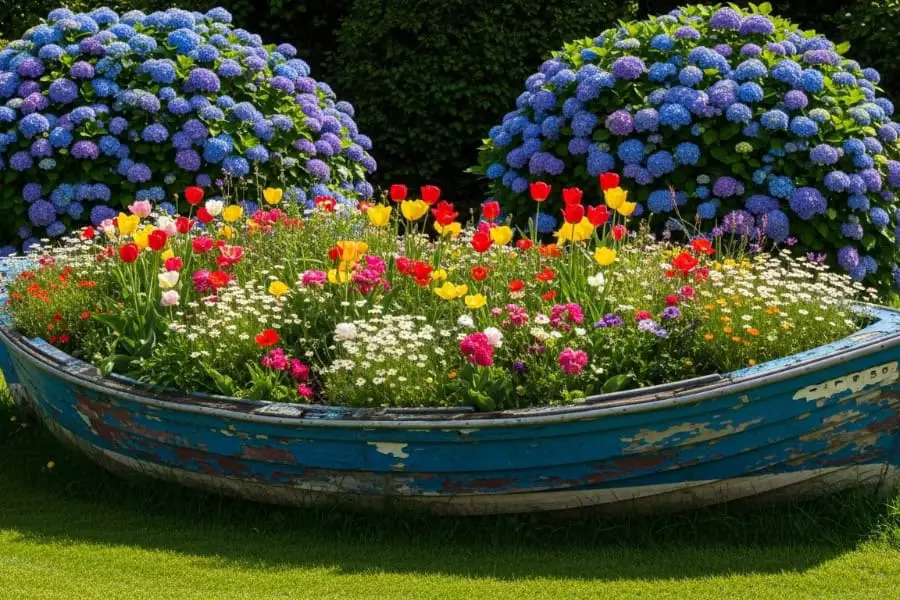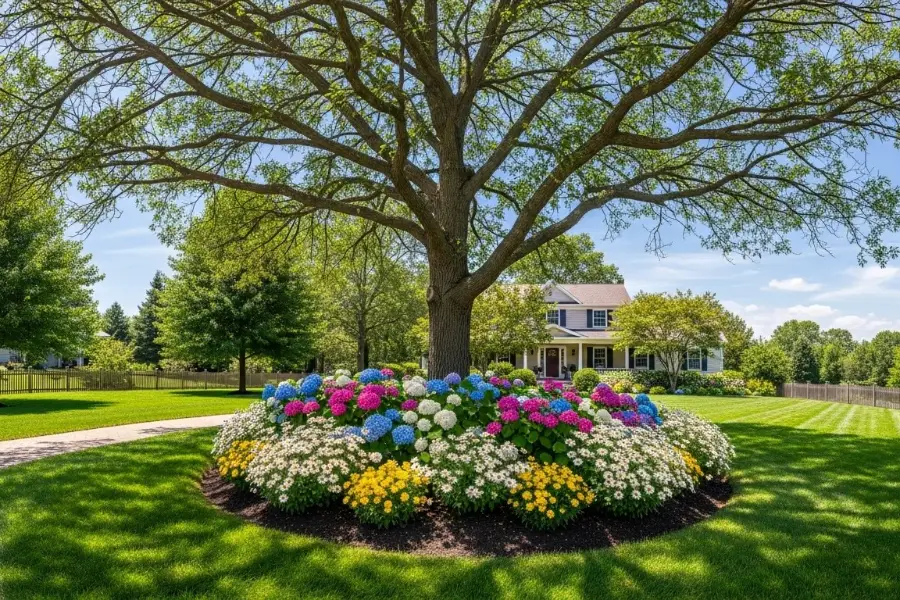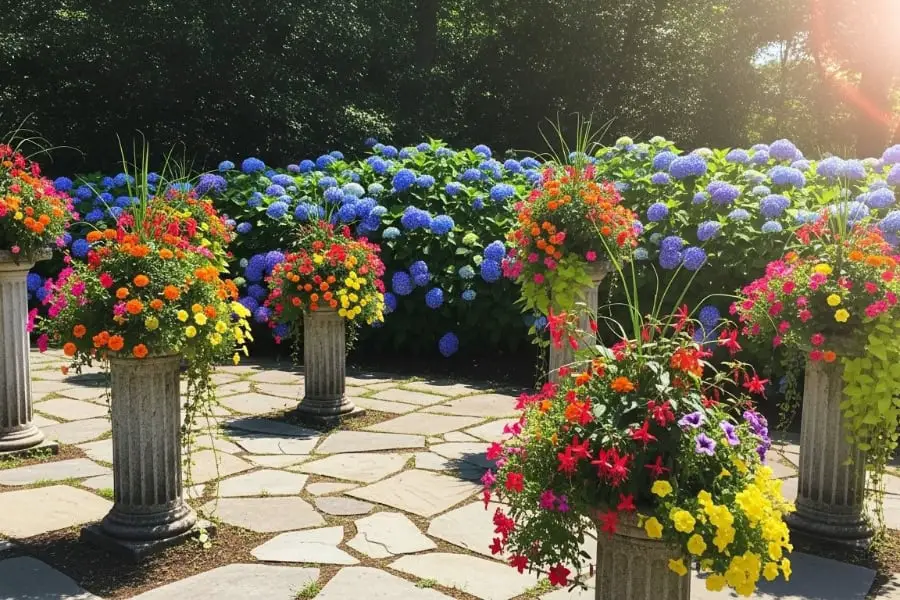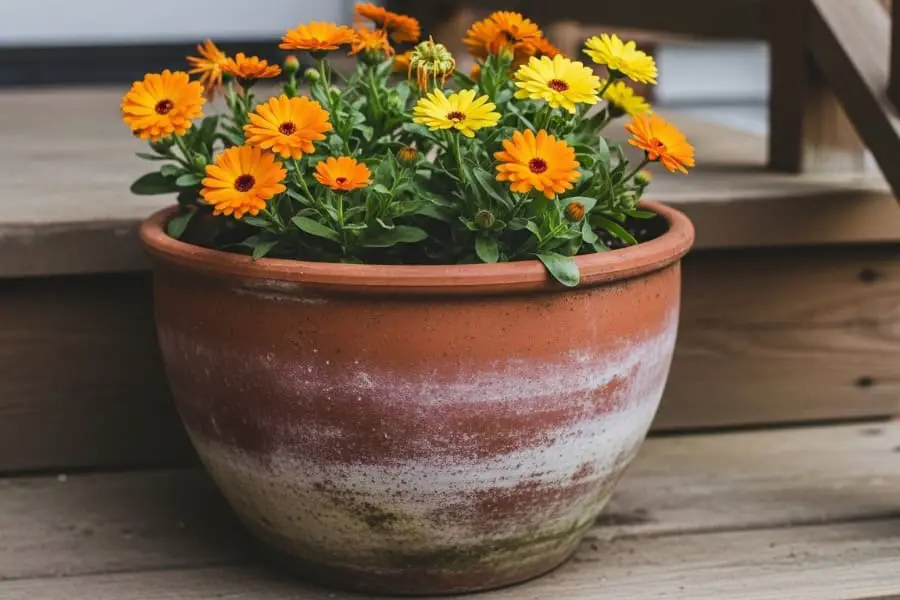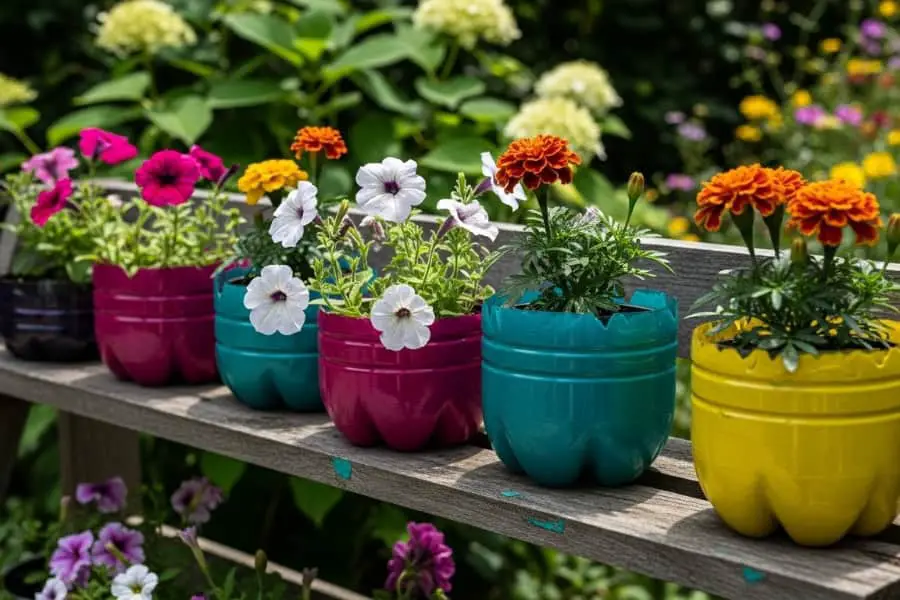Planting hydrangeas in the wrong spot can hurt their growth and blooms. It’s frustrating to see weak flowers, but a little care can change everything. Giving them morning sun and afternoon shade works wonders.
This guide will help you avoid common mistakes so your hydrangeas stay healthy and beautiful. Let’s save those flowers!
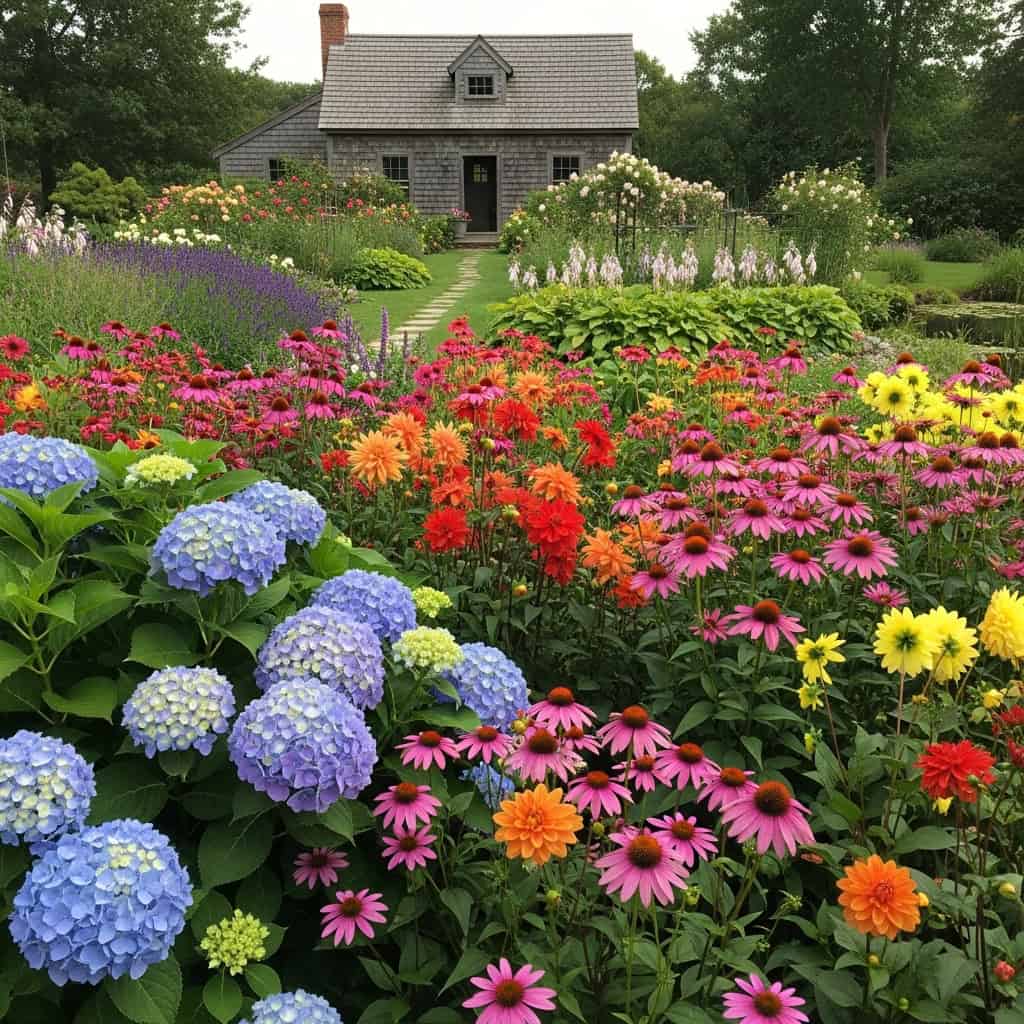
Contents
- 1 Optimal Conditions for Hydrangea Growth
- 2 Frequent Hydrangea Planting Errors
- 3 Hydrangea Care Tools and Tutorials
- 4 Conclusion
- 5 FAQs
- 5.1 1. Where should I plant hydrangeas to avoid common mistakes?
- 5.2 2. Why is well-draining soil important for hydrangea care?
- 5.3 3. How does soil pH affect flower color in bigleaf hydrangeas?
- 5.4 4. Can pruning harm my hydrangeas?
- 5.5 5. What happens if I plant in dry or poor-quality soil?
- 5.6 6. Are there specific mistakes with different types of hydrangeas?
Optimal Conditions for Hydrangea Growth
Hydrangeas thrive with the right mix of sunlight, soil, and care. Focus on morning sun and well-draining soil for healthy blooms.
Sunlight Exposure
I always check the sunlight needs before planting hydrangeas. Most, like bigleaf hydrangeas and oakleaf hydrangeas, love morning sun but need afternoon shade in warmer zones like 8 or 9.
Too much sun can scorch leaves or dry out the soil too fast.
In cooler zones such as 4 or 5, more direct sunlight helps with blooming. Plants kept in deep shade grow weak stems and fewer flowers. Panicle hydrangeas thrive best under full sun while smooth and mountain varieties prefer partial light for happy growth.
I make sure mine get about 4–6 hours daily to bloom well!
Soil Quality
Hydrangeas thrive in loamy, well-draining soil full of nutrients. Heavy clay soil blocks water and causes root rot. I mix compost or peat moss into compacted dirt to improve drainage.
Organic material helps the roots breathe and grow.
Soil pH changes flower color. Acidic soil creates blue hydrangeas, while alkaline soil turns them pink. Testing the pH is simple with a kit from any garden store. Adding sulfur lowers pH for blue blooms; lime raises it for pink ones.
Proper care keeps plants healthy and vibrant!
Frequent Hydrangea Planting Errors
Planting hydrangeas in the wrong spots can cause issues like poor growth or fewer blooms. Small mistakes, like choosing bad soil or too much sun, can hurt your plants.
Excessive Sun Exposure
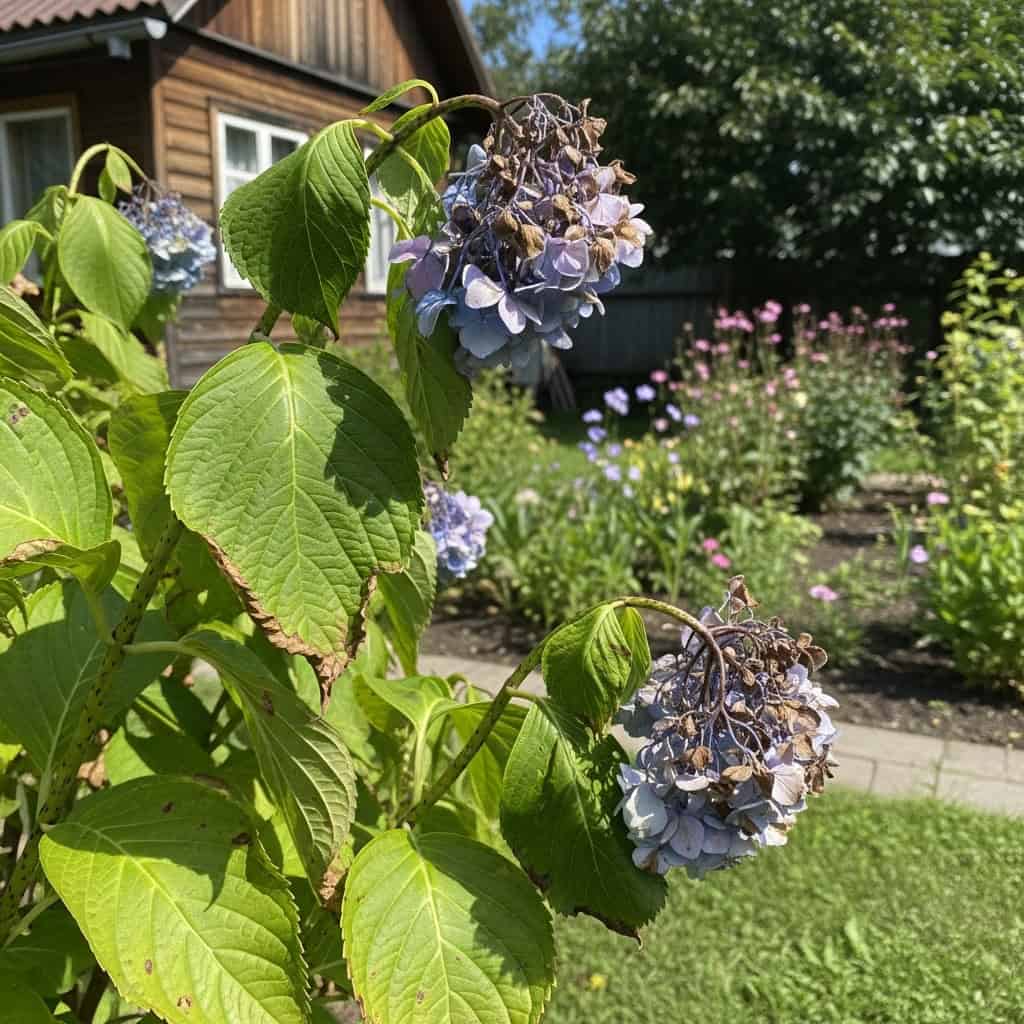
Too much sun stresses hydrangeas. Intense sunlight all day can scorch leaves and fade flowers quickly. I’ve seen this happen often in warmer zones like 8 or 9, where the heat is harsh.
Most varieties prefer only 4 to 6 hours of light with morning sun being best. Afternoon shade helps avoid wilting blooms and dry soil.
Panicle hydrangeas can handle more full sun if watered well, but others struggle without shade breaks. Direct exposure dries out the roots too fast, leading to brown petals and fewer flower buds over time.
Avoid areas with constant strong sunlight for healthier plants year-round!
Planting Beneath Large Trees
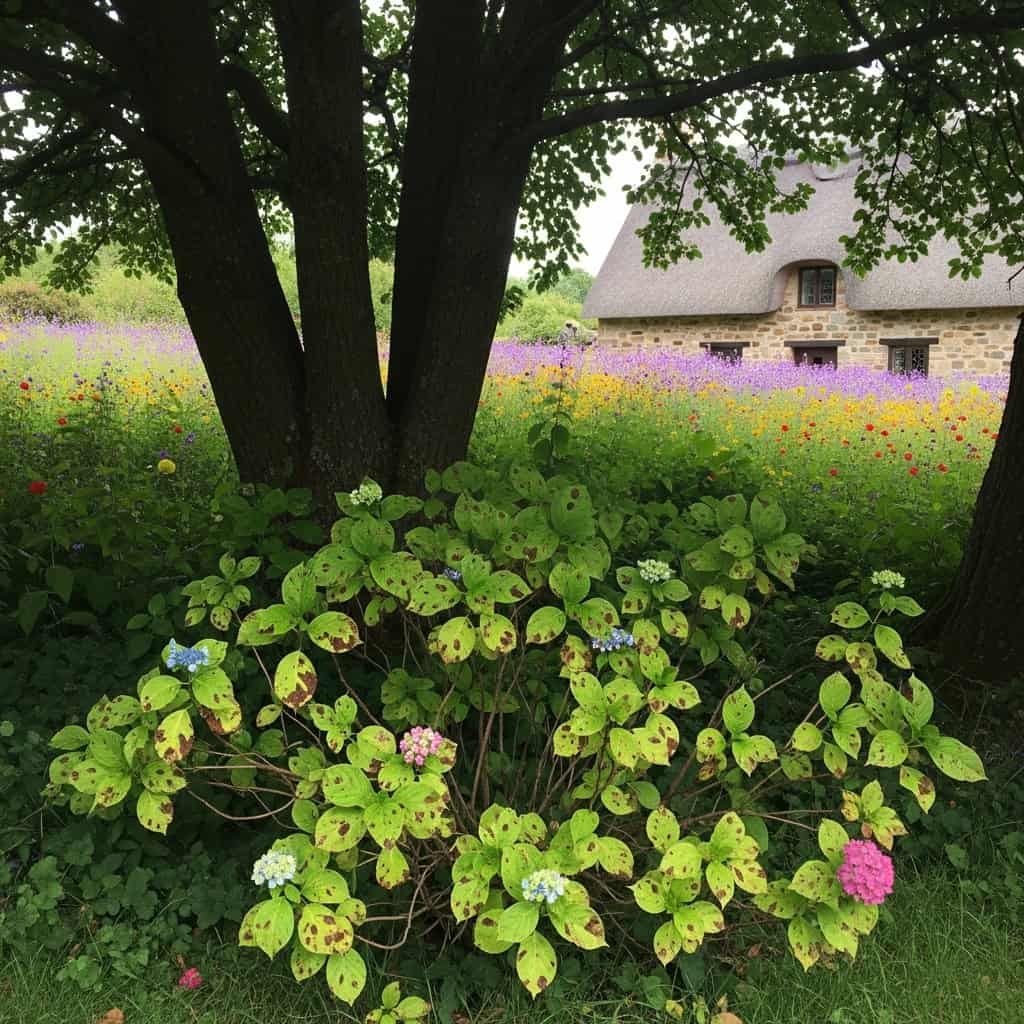
Too much sun is harmful to hydrangeas, but planting under large trees causes bigger problems. Tree roots compete with hydrangea roots for water and nutrients. It becomes hard for the plant to grow well in dry soil caused by this competition.
Deep shade from tree canopies reduces flowering and weakens growth. Hydrangeas need morning sun and afternoon shade, not constant deep shade. If needed, I trim low branches to let more light reach my plants.
Placing them far from big trees helps avoid these problems while keeping their cultural conditions ideal.
Overcrowding Plants
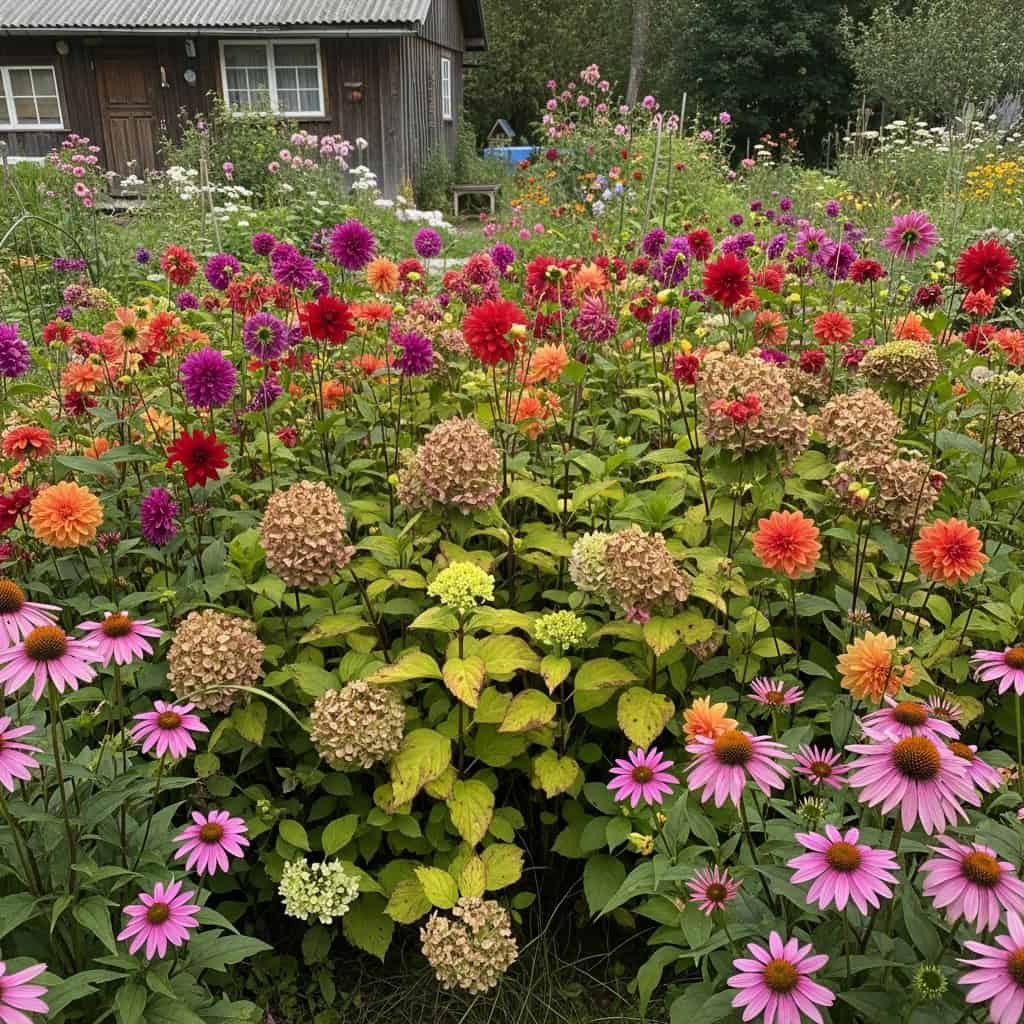
Overcrowding hydrangeas creates big problems. Tight spaces block air from moving around, which raises the risk of diseases like mold or mildew. Each plant needs room to grow strong and stay healthy.
Without proper space, blooms become fewer, stems weaken, and plants fight for water and nutrients.
Good spacing also makes caring for them easier. I always check their mature size before planting to avoid cramping. Adding mulch helps too by keeping soil moist while reducing competition for resources.
Regular weeding keeps neighboring plants from stealing what hydrangeas need most: sunlight, water, and nutrients. Healthy spacing improves both looks and growth!
Planting in Poorly Drained Soil
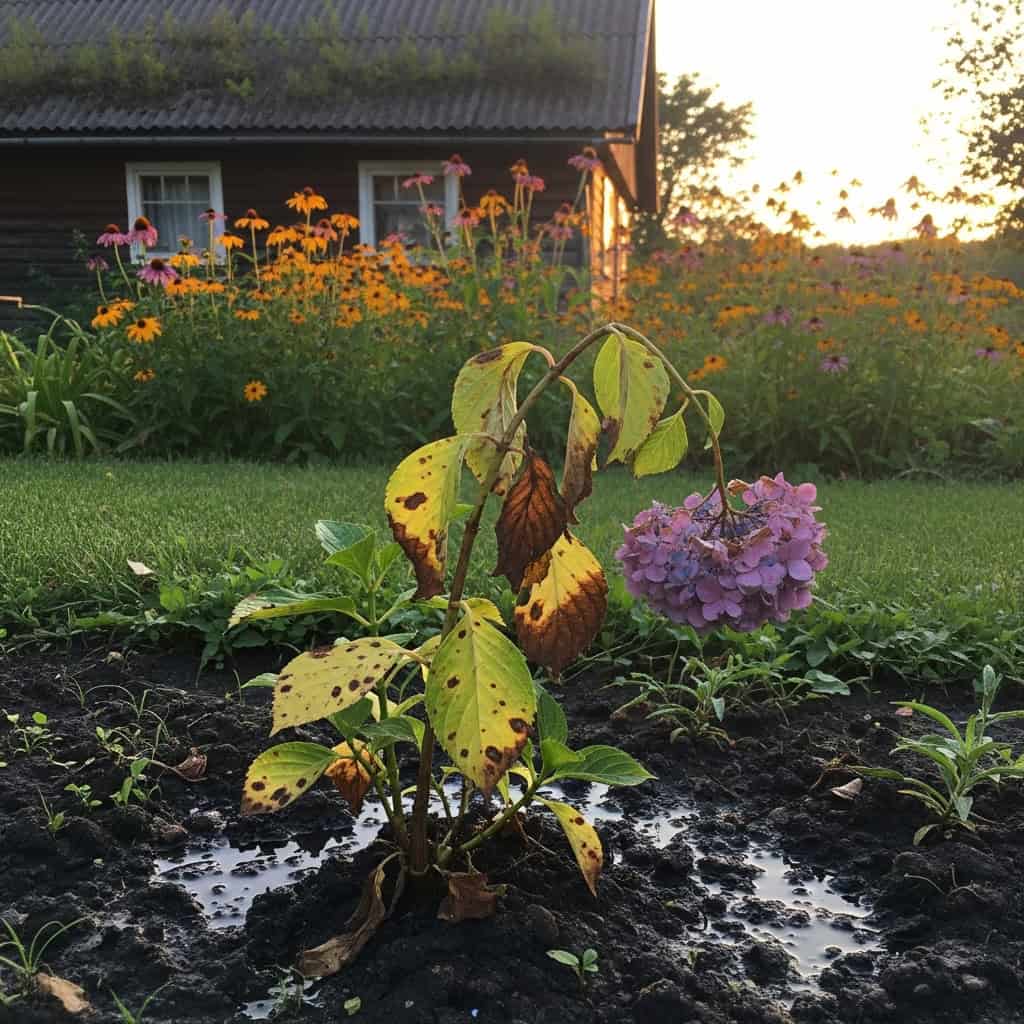
Poorly drained soil causes root rot in hydrangeas. Stagnant water blocks air from reaching the roots, making them weak. I avoid spots where water collects, like under downspouts or at low points in the yard.
Heavy clay soil is another problem since it holds too much moisture.
To fix this, I mix compost or organic matter into the ground for better drainage. Peat moss also works well to improve heavy soils. Hydrangeas need well-draining soil that stays moist but never soggy.
Overwatering makes things worse by adding extra stress and disease risks to plants.
Placement Near Buildings or Fences
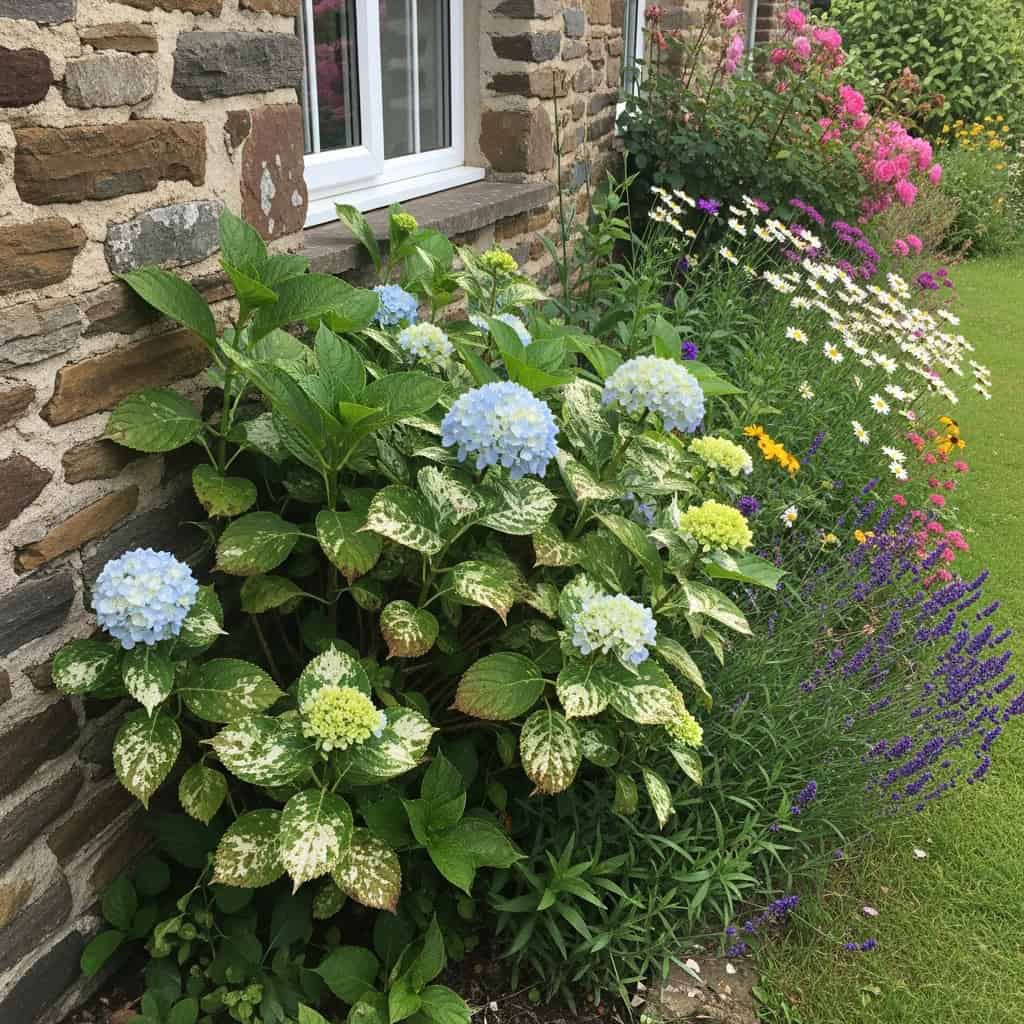
Planting hydrangeas too close to walls or fences blocks sunlight. It can make plants leggy and reduce bloom quality. Structures also limit airflow, which often leads to fungal diseases on leaves.
Crowding near buildings can harm roots by restricting their growth. Roots need space to take in water and nutrients from the soil. Poor placement might cause maintenance headaches later since plants grow awkwardly or poorly over time.
Always give enough room for their full mature size to avoid these issues!
Choosing Wind-Exposed Sites
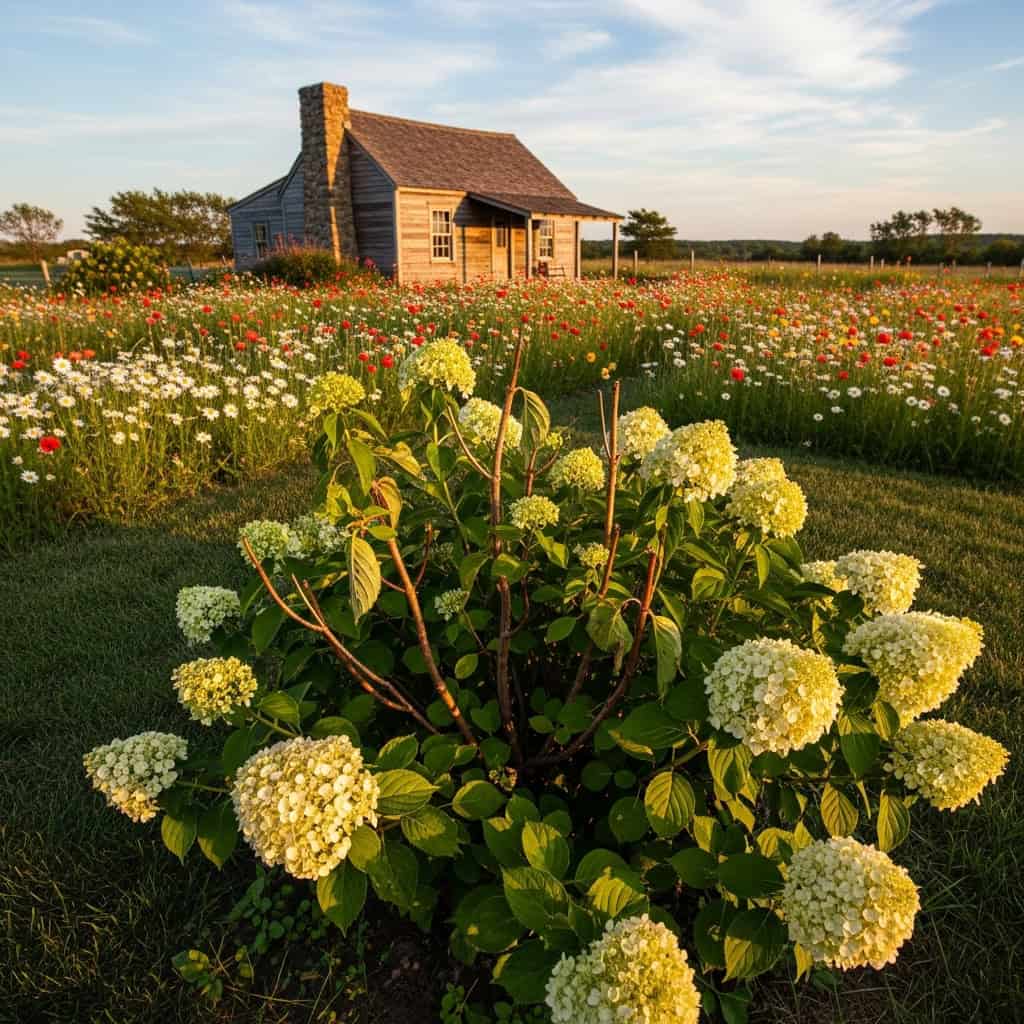
I always avoid open areas with strong winds for hydrangeas. Wind can snap their stems and damage the flowers, leaving them droopy or broken. The leaves also suffer from tearing, which ruins their appearance.
Wind dries the soil quickly, causing water stress for plants. This means I have to water more often to keep them healthy. Protected spots, like near a hedge or low wall, help block harsh gusts.
Hydrangeas thrive better in these calmer spaces with partial shade and moist soil.
Hydrangea Care Tools and Tutorials
A good tracker can make hydrangea care easier. Watching quick tutorials helps with pruning and keeping plants healthy.
Hydrangea Care Tracker
I use a hydrangea care tracker to keep my plants healthy. It reminds me to water deeply twice a week and fertilize in spring with a slow-release fertilizer or compost. I also check their sunlight needs, making sure they get 4-6 hours of morning sun.
The tracker helps me space out my bigleaf, oakleaf, and panicle hydrangeas properly so they don’t fight for nutrients. Pruning gets easier too since it guides me based on each type.
It even tracks cleanup tasks in spring and fall to stop pests from taking over!
Video Series on Hydrangea Propagation
This video series on hydrangea propagation shows how to grow more plants for free. It explains step-by-step how to use stem cuttings. The simple process works well for beginners and experts alike.
I like that these videos share tips on choosing healthy cuttings. They also guide you through rooting them successfully. If problems arise, helpful troubleshooting advice is included too!
Conclusion
Planting hydrangeas in the right spot makes a big difference. Avoid too much sun, poor soil, or cramped spaces. Give them morning sun and afternoon shade for healthy growth. Check for well-draining soil to keep roots safe from rot.
With the right care and placement, your hydrangeas will thrive!
FAQs
1. Where should I plant hydrangeas to avoid common mistakes?
Plant hydrangeas where they get morning sun and afternoon shade. Avoid spots with deep shade or full sun all day, as this can stress the plants.
2. Why is well-draining soil important for hydrangea care?
Hydrangeas need well-draining soil to prevent root rot. Heavy clay soil holds too much water, which can damage roots.
3. How does soil pH affect flower color in bigleaf hydrangeas?
Soil acidity changes the color of bigleaf hydrangea flowers. Acidic soil produces blue flowers, while alkaline soil makes them pink.
4. Can pruning harm my hydrangeas?
Yes, improper pruning damages flower buds on old wood varieties like bigleaf and oakleaf hydrangeas. Always check your variety’s needs before pruning.
5. What happens if I plant in dry or poor-quality soil?
Dry or nutrient-poor soils weaken your plants and reduce blooms. Add peat moss and slow-release fertilizer to improve cultural conditions for healthy growth.
6. Are there specific mistakes with different types of hydrangeas?
Different varieties like smooth, panicle, mountain, or oakleaf have unique needs for light and moisture levels; research their preferences before planting!

